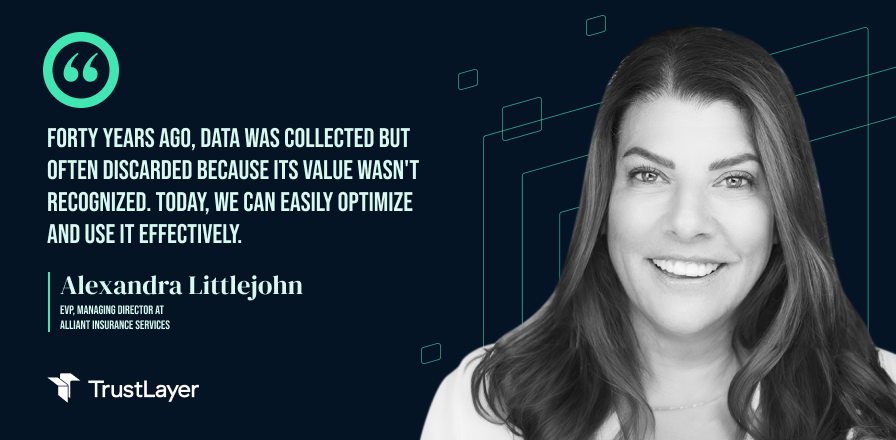Leveraging Data Analytics for Risk Management in Insurance with Alexandra Littlejohn

On the latest episode of Risk Management: Brick by Brick, Jason Reichl is at RISKWORLD 2024 speaking to Alexandra Littlejohn, the Managing Director of EVP at Alliant Insurance Services, one of the largest and fastest-growing insurance brokerage and consulting firms in the United States.
In this episode, Jason and Alexandra explore leveraging data to provide innovative insurance solutions. Listen in as they explore how data collection and analysis have become crucial in the industry, the role of artificial intelligence, the expanding responsibilities of risk managers, and the need for education and consultation in emerging areas like cybersecurity.
To find out how TrustLayer manages risk so that people can build the physical world around us, head to TrustLayer.io.
Leveraging Data Analytics in Insurance
With the ever-increasing volume and complexity of data available today, data analytics has emerged as a powerful tool for insurers to enhance their risk management practices.
Alexandra says that it was not always this way. Although some forty years ago, data was still being collected, there was far less understanding of how to optimize it—she suggests that “you were just throwing it away”.
In the context of risk management, modern data analytics involves analyzing various types of data, such as historical claims data, customer data, market data, and external data sources, to identify and assess risks, predict future outcomes, and develop effective risk mitigation strategies.
Alexandra says that data analytics can enable insurers to develop sophisticated risk models that consider multiple variables and scenarios. By leveraging machine learning algorithms, insurers can analyze vast amounts of data to identify hidden patterns and relationships that traditional risk models may miss. This can lead to more accurate risk assessments and better risk management strategies.
She uses an example from the construction industry:
“Then we’re taking their losses and exposures, and we’re running it through different levels of simulation, so that we can see where’s your right using that attachment point you’re comfortable with, You know, where is the right level of cost and then right level of limit to purchase.”
Alexandra suggests that transparency is one of the benefits of leveraging data analytics in the insurance industry. With clear, reliable data, it’s possible to foster a more trusted relationship between the carrier and the policyholder.
Customers can walk “into a room with more understanding about their own programme and what the outcome should look like, which makes that transparency happen.”
To find out more about the ever-evolving nature of risk management, tune in to this episode of Risk Management: Brick by Brick.
Apple Podcasts: https://apple.co/3VkKqk6
Spotify: https://spoti.fi/4bUL3rI
Podcast Host: Jason Reichl
Executive Producer: Don Halliwell

